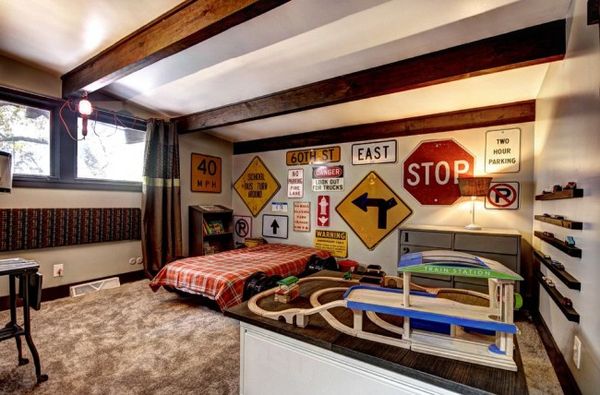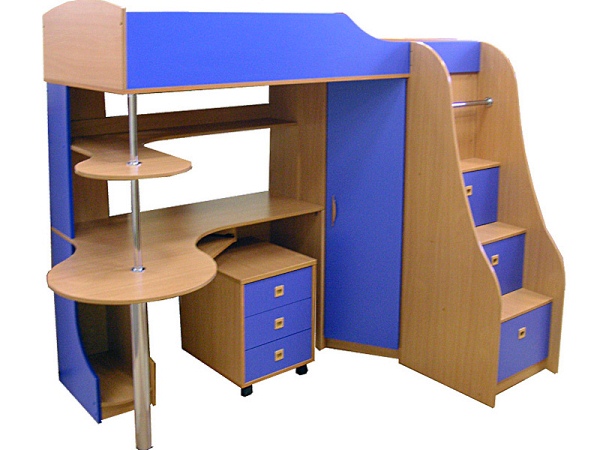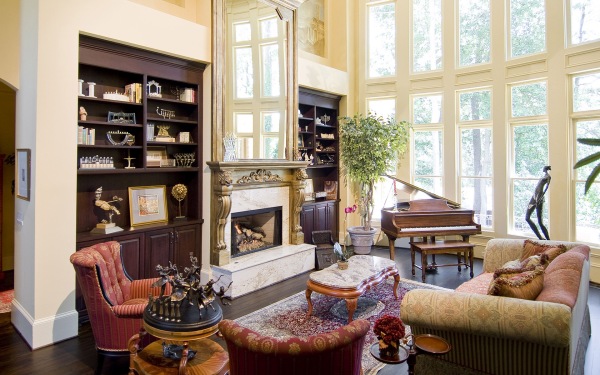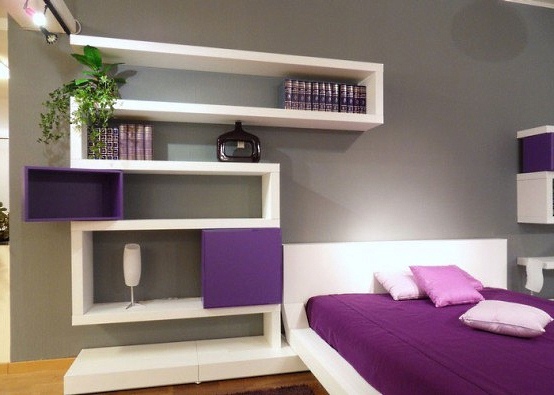Secrets of Buying and Laying Ceramic TilesHave you decided to put the tiles yourself? It is right, a good thing, thankful and defiant the self-respect with a great result. And it certainly will happen, if you will not do it quickly-and-dirty, and fathom all the secrets and subtleties, without any hesitating ask to experienced tillers or at least those who, at minimum once, puts the tiles. Some secrets can be found here. Marking Ceramic TilesNowadays, the possession of information implies the owning of the most hard currency. Often this information is on the surface, in plain sight, but read it not everyone can. This happens with almost all manufactured goods: at least, read what is written, looked at the picture, figuring to himself that they were designed for imbeciles. However, well, if it is only a tenth of the information. It is applied on the packaging for the ceramic tiles. Different colors of the labels do not mean that the packers ran out of ink of some color. Icons are not a rebus for leisure, Latin letters and Roman numerals − it is not a secret mason's code, coming from the depths of centuries. It will not hurt to understand... Just all the information includes different categories: physical, chemical, and typical of the species, grade and size compatibility, etc., and it is served in different ways. Grade of Ceramic TilesThere are four sorts of the ceramic tiles. If the tile is released by the company, adheres to international standards, the marking color will be red, blue or green. It refers to the varieties of tiles: - the 1-st sort is marked in red (it should not have more than 5% of the defect); A defect does not mean the broken tile or chipped on it. It may not be noticeable for a few feet scratch, roughness, any blotches. In addition, the second and the third varieties rarely go on sale because a manufacturer did not want to spoil his reputation. Usually go there the first and commercial sorts. The Symbolic That Characterizes TileThey are the next:
Marking color and pictograms are relevant because there are in the market as domestic tiles so imported. And much do we know languages? How Many Tiles Are There in Square Yard? Tile AreaDoes it need to measure floors and walls, and calculate the area covered by the tiles? Figured on the eye, bought; if has not sufficed − went and bought. Ahn, no! It is too high risk in the case of the damaged tiles will vary by size and tone colors. Why is it? The clay to clay − discrepancy, if they take out from the different quarries. And this means that their physical and chemical properties are somewhat different. What color will be a tile and what caliber it will be − anybody does not tell with absolute certainty. So it is better to buy them from the same batch. Simple Arithmetic Estimate, how many tiles you need to cover a particular area − the problem for a third-grader. First, needs to measure the sides of a tile and calculate its area. For it was easy to count, for example, take the tile of 4 x 4 inches. We get about 15.5 sq. inches or about 0.1 sq. feet. Then it is necessary to measure the total area to be covered with the tiles. Let us assume it will be a bathroom wall with the length of about 6.6 feet and the height of about 7.2 feet. The area of this wall will be 6.6 x 7.2 = about 47.5 sq. feet. Then the area of the wall we divided by the area of one tile. In our example: 47.5 / 0.1 = 475. Thus, on rough estimates there are 475 tiles. Now we have to ask the seller (or read the label) how many tiles are in one box. For example, fifty. Divide 475 / 50 ≈ about 10. That is, we need to have with a small margin 10 boxes of tiles of that size. Practically, it is unessential to us to do last calculations. The fact of the matter is that on the packaging almost always indicated an area that can be covered by the contents of this box. You can just divide the area of the wall by this value. The result will be the required number of packages. It Is not All as Easy as It SoundsFor fear of spoiling several tiles, for fear of defect, given the opportunity to buy tiles of smaller caliber, it has become customary to buy a tile with a reserve. However, there is a risk to buy the insufficient quantity of a tile. At last calculation above we were doing the simplest arithmetic. Yes, and such method of counting the tiles fit, but only in the case if the length and width of the room divisible the length and width of a tile. That is, when its width and length can fit a whole number of tiles. Also, counting would be correct, if the room was covered with tiny pieces of tile, using them all. In practice, there are almost no such rooms, and the tiles are not fractionized − it turns ugly. We need to take more tiles, sometimes − a lot more. If the floor of one of the rooms has a complex configuration, it is difficult to count the number of the tiles. The room is divided into several simple geometric shapes. Calculate the number of the tiles for each figure, data are summarizing. However, before you sit down with a sheet of paper, a pencil and ruler and draw a sketch of the geometry of the installation. When buying, considering possible errors, the breakage of glass and the complexity of the configuration, it is better to take the tiles on 10% more than the counted quantity. Will it remain? Well, thank God, in the case of repair or replacement of several tiles there will not be a question about the right tone and caliber of a tile. Different Tones of Tile and Why Is It Dangerous to Buy Tiles after Two YearsBought the tiles, installed them, if they are not coinciding, cut off them and everything will be tip-top. More often so stacking of tiles is represented. However, only until then, until you personally see the discrepancy between the corners of the tiles or unnecessary shades: instead of pale pink appears light orange. That is, besides the sizes can not coincide still and colors of stacked tiles. Why Is It Necessary to Buy Tile from Same Batch?We are waiting for the same tile color from the conveyer, but getting other. All the nuances of the technology seemingly observed. The only difference is that an expected tile was not with the same batch of the clay or was got out of the furnace at the wrong time, when it burned the rest. The reason for this discrepancy is that the composition of different clays at least a little, but differs between each other. Similarly, although slightly different, we can say and about the temperature condition. If we used the artificial, chemical dyes, to achieve the same tones it would be much easier. In fact, it turns out that the color and tone of a tile depended on the oxides and salts of different metals. How will behave each of the components of the clay during the firing, it is difficult to predict. And using chemical dyes the desired result will not achieve: it is unclear which shade is obtained from the mixing of natural and artificial pigments. There you are and the different color shades and the discrepancy of tones. What is more, the change of tone may occur during the burning in one day. What here to speak about that in a couple of years it will be almost impossible to buy the required tone tiles. Thus, there is absolutely no way to produce the right tone tiles to order. What to Do, if There Is no Tile of Required Tone? The fact is that to lay a tiled floor or wall is still necessary. Output - to find a tile that is close to the laid one by tone. How is it? And here a marking comes to the rescue. A tone is indicated by letters and figures. First, comes a Latin capital letter then − numbers. For example, two tiles have tones A50 and D42. The tone "A" will be brighter "D" (in the numeric part of indicator the lighter tone has a lower value). When you to buy tiles, for example, the A50, you must first ask the seller whether the tone of the A50. If not, then you must take the tiles with any numeric indicator, but with the letter "A". Moreover, the closer the sought quantity is the better. The difference is almost indistinguishable. In our example, the closest colors will be A49 from one side and A51 − from the other. In the picture: This is the example of writing a tone (at the beginning of the top row). Not necessarily to go shopping and markets in the city with the tile in your pocket hoping to find the sought. You can just call there. If you will say the color, hue and tone only by the words, most of all, you will not be understood. To make it clearer you must record beforehand somewhere the information about the country-manufacturer, factory, collection name, color, size, article, tone and caliber. And yet you must know that the tile's tone − it is not a flaw and defect, and if you bought this thing, and it found to be unfit, to take it back in the store are not obliged. Is There Alternative? In principle, there is. Once and for all to forget about the tiles' tones you can be laid the tiles, done in the styles of Antique or Rustic. It was originally conceived that the tiles should be in different colors: if the wall stylized under the medieval wall of the castle, what difference does it make, what tones will be on the image of the boulder (it is implied that a stone is a few centuries old, it could not only change the tone, but even covered with moss. However, what to do if the tiles are already purchased and the tones do not match? You should know that tiles of the same color, but different tones, are different only when they are in the same plane. To differences was not noticeable, it is necessary not to lay them side by side, but distributed on different walls. What has changed? First, they are now in different planes, and secondly, the light falls on them and reflected at different angles, concealing the differences in tones. What Determines Cost of Monochromatic (Monocolor) TilesAlmost name "monocolor" reports its main distinguishing feature: it is a monochrome and solid tiles where there should not be any splashes and stains. Such tiles are widely produced in some countries, in the middle of the last century. Modern MonocolorToday the monochrome tiles completely changed their look. These articles are of different colors and tones, bright and beautiful. Some collections comprise more than thirty different colors. And companies and firms to produce monocolor tiles all over the world are innumerable, and each has its own dyes. So the scope for imagination when working with colored tiles abound. Not only that the laid monochromatic surfaces and so look great, the amazing designs, futuristic paintings, interesting geometric patterns with their combination of different colors are added for them. Today is their countless. It is impossible not to note especially the designs of Spain or Italy. Their manufacturers are assured us that such goods have liquidity, and the profit to them is provided. What Determines Cost of Monocolor Tiles?Fish looks for deeper water, and the buyer − where it is cheaper. So, researching the market of the ceramic tiles, he notices that sometimes the prices of the monocolor tiles are differing considerably. Blaming the greed of the whole system of commerce in general, and each seller separately, he is almost right. Trade is obliged to take their percentage, but never it will reach 900% (it is in the case of the price is much higher). Here, the reasons are others:
Price and ProductionLarge enterprises produce very large quantities of monocolor tiles hence decrease costs per unit of output. In addition, they have established the guaranteed sales. So, in order to retain customers and attract new ones reduced the prices within reasonable limits. Representatives of the small businesses cannot afford it; otherwise they will work for peanuts. On the other hand, the small firms sometimes baked the tiles the whole day, resulting in more saturated colors of glaze. At the large factory it is often enough a couple of hours for burning, as all chemical and physical reactions have time passing in the glaze and the tiles. Of course, the tiles with the rich tones will cost more, the more it energy-consuming. Now, it is something else. It was already mentioned that every time after burning, the tile has a tone different from the tone of the previous batch. So, if you sell different tone of the monocolor tiles as tiles of the same color, the products will have a small price. Some companies do so. Others will dispatch unnecessary tint as defect and breakage. It is clear that the value of the rest of the tiles will increase significantly. Colors and PriceBeige, white and grey monocolor tiles are always cheaper, as the dyes for them have a low cost. The most expensive tiles are orange and red colors. Moreover, the dyes for them are expensive (they are based on the cynthion), the last during burning even gives the black blotches. For monocolor tiles such inclusions are unacceptable. These tiles are sent immediately in the reject. And, therefore, the price of the remaining tiles is growing. Price and MaterialsAnd certainly the cost of monocolor tiles will depend on the prices of feedstock, i.e. materials. For example, the cost of the white clay is higher than the cost of the red one. Hence, the tile and the glaze from it are going to be more expensive than from the red one. The thicker the tile is, the more expensive. Strength impacts the cost of the monocolor tiles too. The most expensive will cost the granite tiles monocolor, and if it is painted on the entire thickness, then generally... You can buy and cheap and expensive of the monocolor tiles. The choice is great, and you can save your money. However, you should remember that the brightness and tone's depth depend on the degree of burning and quality of the glaze, and it is much more expensive. What is Caliber of Tile and Why Is It Important to Pay Attention to It When Buying? Whoever put the tiles, noticed one strange thing: sometimes tiles of the same size, but taken from various packages, do not form the straight rows. It was necessary to increase the width of the joints to properly lay the next row. You lose faith in humanity, when it seemed that were palmed off defective articles. However, it is not so, simply the tile of different caliber has got into within the same their size. Probably, they were taken from different packages, or a packing, through ignorance, was taken from the different batches. Why Are Tiles of Same Size, but Taken from Different Batches, not Identical?The reason is the same as with the mismatch of colors. The other batch consists of the clay from another deposit. Let a little, but its composition differs from that of the previous clay. However, if there is a different composition and properties are different. And at the same temperature of drying and burning, these clays shrink with their size in different ways. That is dry and burnt tile differs in size from the previous one. It should be emphasized that there are not defects in these tiles, and unequal sizes are a consequence of the technological process, but not any error and system failure. Also, although the burning process is controlled by computers, almost impossible to fully replicate in the furnace the temperature which was in the previous batch. How to Deal with It?There are two ways − one can be considered passive, the other − radical (rectification of the tile):
How Not to Be Mistaken with Choice? Be sure to read the information on the package. On import packing there can be sometimes only a size of caliber. In any case, you have to take it a rule to buy the tiles of the same caliber, and if it is impossible, and the styling is not waiting, then the neighboring value. A small difference will be hidden by the joints. That is, to the third caliber you can pick up the tiles of 2 and 4 calibers. It is allowed a discrepancy of 0.2 inches, but this is very noticeable, especially on the tile of small dimensions. More articles on the topic: - Shoe Rack in Apartment: Ideas and Design - 15 Unique Variants Novelties for Bedroom Drapes - Small Balcony − How to Make It Cozy? (+20 Photos) | |
|
| |
Children's Bedrooms for Boys - Selection of 45 Photos
Bunk beds with Working Zone
Photos of Country Houses - Best Variants
Design Small Nursery (60 Photos)
Front Rooms Interiors. 36 photos
Design of Small Bathroom. What Color of Tiles to Choose to Visually Enlarge Space?
Small House
Construction Ideas of Unusual Shelves for Domestic Purposes
Bedroom's Interiors. 74 Photos
Plastic coating for bathroom − practical and inexpensive!

 • The icon, talking about thickness of a tile. When laying the tiles it is not less important characteristic than the tile's caliber. The amount of adhesive mixture, solidity and smoothness of installation depends on it.
• The icon, talking about thickness of a tile. When laying the tiles it is not less important characteristic than the tile's caliber. The amount of adhesive mixture, solidity and smoothness of installation depends on it. • Icons, designating the floor or the wall tiles. Even for a layman it is clear that the floor tiles in the wall will look not particularly well, and the wall ones will not lie on the floor far long.
• Icons, designating the floor or the wall tiles. Even for a layman it is clear that the floor tiles in the wall will look not particularly well, and the wall ones will not lie on the floor far long. • The icon is similar to a mosaic, suggests that the tile's consignment may have a different hue.
• The icon is similar to a mosaic, suggests that the tile's consignment may have a different hue. • This "terrible saw" tells about resistance to abrasion. For this indicator, the tile is divided into six classes (0, Ι-V). The smaller the class, the greater the abrasion. Therefore, the tiles equal zero, will approach only in a wall. The fiver will long be survived and in a floor. By the way, sometimes the tiles with high wear resistance are depicted by a foot on a surface that is shaded.
• This "terrible saw" tells about resistance to abrasion. For this indicator, the tile is divided into six classes (0, Ι-V). The smaller the class, the greater the abrasion. Therefore, the tiles equal zero, will approach only in a wall. The fiver will long be survived and in a floor. By the way, sometimes the tiles with high wear resistance are depicted by a foot on a surface that is shaded. • This icon means the surface hardness of tiles. This indicator characterizes, whether we or our children, will scratch this tile or make it to the cleavage. The basis is a scale of hardness of minerals, where the most soft mineral − talc has a hardness of "1", the hardest mineral − diamond of "10". The enameled tiles have a hardness of "5", glazed – of "6".
• This icon means the surface hardness of tiles. This indicator characterizes, whether we or our children, will scratch this tile or make it to the cleavage. The basis is a scale of hardness of minerals, where the most soft mineral − talc has a hardness of "1", the hardest mineral − diamond of "10". The enameled tiles have a hardness of "5", glazed – of "6". • Resistance to the chemically active substances. First, and foremost, this applies to acids and alkalies. The tiles, especially glazed, inert to their exposure. This means that they will not form the ingrained dirty spots, which does not make the tiles attractive;
• Resistance to the chemically active substances. First, and foremost, this applies to acids and alkalies. The tiles, especially glazed, inert to their exposure. This means that they will not form the ingrained dirty spots, which does not make the tiles attractive; • This icon shows how much area you can cover with the contents of the box. It is an important feature, especially during the procurement of material for the cladding. This makes it possible to estimate how many boxes of tiles you need.
• This icon shows how much area you can cover with the contents of the box. It is an important feature, especially during the procurement of material for the cladding. This makes it possible to estimate how many boxes of tiles you need. • These two icons indicate the weight and the number of tiles in the package;
• These two icons indicate the weight and the number of tiles in the package; • The icon of resistance to bending. It is very important for the floor tiles; it shows the load the tile can withstand without breaking. The resistance is determined by pressing at three points: installation of two supports below and the application of force from above; the left sign in the icon indicates the stability to temperature, the second one means the frost resistance, i.e. resistance to negative temperatures. Of course, these characteristics are more important for the cladding of the facade.
• The icon of resistance to bending. It is very important for the floor tiles; it shows the load the tile can withstand without breaking. The resistance is determined by pressing at three points: installation of two supports below and the application of force from above; the left sign in the icon indicates the stability to temperature, the second one means the frost resistance, i.e. resistance to negative temperatures. Of course, these characteristics are more important for the cladding of the facade. • Slip resistance. This feature shows how great is the risk of "to stretch" in the bathroom or near the pool. There are five classes of risk, depending on the force of friction (RΙ-R5). The best friction where there is the more big digital sign.
• Slip resistance. This feature shows how great is the risk of "to stretch" in the bathroom or near the pool. There are five classes of risk, depending on the force of friction (RΙ-R5). The best friction where there is the more big digital sign.








